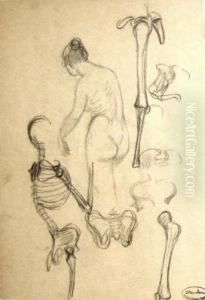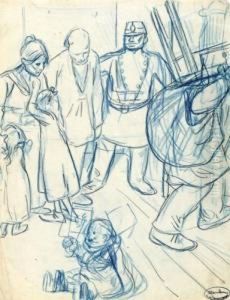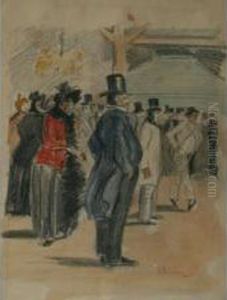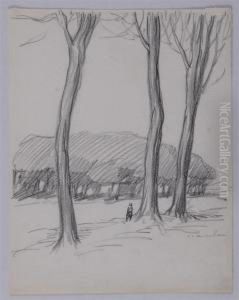Theophile-Alexander Steinler Paintings
Théophile-Alexandre Steinlen, also known as Théophile Steinlen, was a Swiss-born French Art Nouveau painter and printmaker. Born in Lausanne, Switzerland, on November 10, 1859, Steinlen studied at the University of Lausanne before moving to Paris in 1881. He quickly became immersed in the bohemian atmosphere of Montmartre, which was the center of the vibrant arts scene in Paris at the time.
Steinlen was particularly known for his illustrations, posters, and paintings that often featured cats, which were one of his favorite subjects. He also depicted scenes of Parisian working-class life, showing empathy and a deep connection with the struggles of the common people. His most famous work is the poster 'Le Chat Noir' created for the famous cabaret of the same name, which became an iconic image of the era.
Steinlen's work is characterized by its strong social commentary and its warm, sometimes sentimental depiction of Parisian society. He contributed illustrations to various leftist magazines and was politically engaged, with a strong advocacy for the poor and the working class. He also created illustrations for famous French writers such as Emile Zola and Guy de Maupassant.
Throughout his career, Steinlen's work was exhibited in various galleries and shows. He was closely associated with other artists of the time, such as Toulouse-Lautrec and Pierre Bonnard, who also depicted Parisian life. Steinlen's legacy is that of a compassionate observer of the human condition and an artist who captured the spirit of Montmartre during the Belle Époque.
Théophile Steinlen died on December 13, 1923, in Paris. Today, his work can be found in museums around the world, and he is remembered as a prominent figure in the art world of the late 19th and early 20th centuries.



